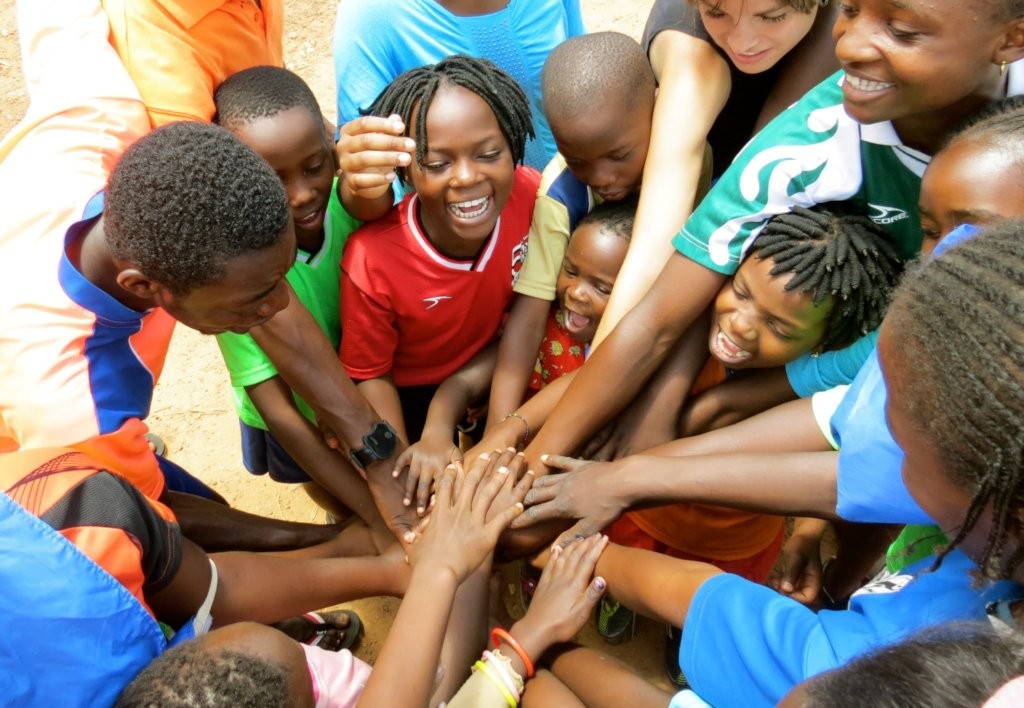Author's details
- Hakim A Abubakre
- BA (Hons) International Business Management, Msc Digital Marketing.
Reviewer's details
- Dr. Khashau Eleburuike
- MBBS (Ilorin) MSc. Global Health Karolinska Institute.
- Resident doctor in family medicine in Northen Sweden.

- Date Published: 2025-03-19
- Date Updated: 2025-03-19
Normal Development in Adolescents
Adolescents experience a range of physical, cognitive, psychosocial, and emotional changes as they grow, typically beginning around the onset of puberty. In Sub-Saharan African settings, these changes may be influenced by cultural norms, societal expectations, and environmental factors.
Physical Development:
- Adolescents undergo growth spurts, development of body hair, and, in females, the onset of menstruation.
- These changes may be accompanied by increased curiosity about their bodies, gender identity, and heightened self-awareness.
Cognitive Development:
- Adolescents begin to think abstractly, with an increased capacity for critical thinking and the ability to consider multiple points of view.
Social and Emotional Development:
- Adolescents form stronger peer relationships and seek more independence from parents. Emotional intensity is a normal part of adolescence, and they experience fluctuations in relationships, first love, and heartbreak.
- Physical Development:
- Growth of height, weight, and changes in body composition during puberty.
- Onset of puberty involves the development of secondary sexual characteristics, such as underarm hair, breast growth in girls, and voice deepening in boys.
- Cognitive Changes:
- Development of abstract thinking helps teenagers think beyond concrete facts and engage in problem-solving and decision-making processes.
- Memory and learning capacity also improve during adolescence.
- Psychosocial Changes:
- Adolescents develop interpersonal skills and greater decision-making maturity.
- They begin exploring their identity and seeking a sense of self, often influenced by social and cultural factors in their environment.
- Identity Development:
- Adolescents begin to form a strong sense of identity, which impacts their mental health and self-concept.
- This process involves figuring out their place within personal, social, and cultural contexts.
- Emotional Intensity:
- Adolescents commonly experience emotional highs and lows, including friendship dynamics, first romantic relationships, and heartbreak. These experiences shape their emotional resilience.
Early Adolescence (Ages 10-13):
- Physical Development: Rapid growth spurts, body hair growth (underarm, genital areas), breast development in girls, and changes in boys' testicles.
- Girls may start menstruating around age 12.
- Physical changes can cause curiosity or anxiety, especially if adolescents are unsure what to expect.
- Cognitive Development: Early adolescents often see things as "black and white" (right or wrong) with little flexibility. They may be more self-conscious, particularly about their appearance and how they are perceived by their peers.
- Social Development: Early adolescents seek more independence and may challenge family rules or boundaries as they begin to crave more privacy and autonomy.
Middle Adolescence (Ages 14-17):
- Physical Development: Puberty continues, especially in boys, with growth spurts, voice deepening, and acne development. Girls may have regular menstrual cycles by this stage.
- Cognitive Development: While the brain continues to mature, middle adolescents may struggle with impulse control and decision-making as the frontal lobe remains underdeveloped. They begin to think more abstractly but do not yet fully process long-term consequences.
- Social Development: Teens at this stage often become interested in romantic relationships and sexuality, which can be stressful if support systems are lacking. They spend more time with friends than family and become highly aware of peer pressure.
Late Adolescence (Ages 18-21 and beyond):
- Physical Development: By this stage, most adolescents have reached their full height and physical maturity.
- Cognitive Development: Late adolescents develop better impulse control, recognize risks and rewards, and are capable of complex decision-making.
- Social and Emotional Development: Friendships and romantic relationships become more stable. Adolescents in this stage also re-establish relationships with their families as they transition to more adult-like interactions. They develop a strong sense of self and have clearer hopes and ideals for the future.
Adolescents in Sub-Saharan African settings may experience the same developmental stages described above, but environmental, cultural, and socioeconomic factors can influence how they progress through each stage.
- Cultural Norms: In many Sub-Saharan African communities, extended family, traditions, and social expectations play significant roles in shaping adolescent identity, social relationships, and the pursuit of independence.
- Socioeconomic Factors: Poverty, limited access to education, and healthcare disparities may impact physical development (due to malnutrition), educational outcomes, and emotional well-being.
- Family and Community Roles: Adolescents may take on adult responsibilities earlier, such as contributing to family income or taking care of younger siblings, which can influence their psychosocial and cognitive development.
This patient information document provides a comprehensive look at normal development, key milestones, and the specific stages of adolescence within Sub-Saharan African settings. It highlights the interplay of physical, cognitive, social, and emotional growth, alongside the cultural and environmental factors that shape adolescent development in this context.
- Kapur S. Adolescence: the stage of transition. Horizons of holistic education. 2015 Jul;2(3):233-50.
- Sheldrick RC, Schlichting LE, Berger B, Clyne A, Ni P, Perrin EC, Vivier PM. Establishing new norms for developmental milestones. Pediatrics. 2019 Dec 1;144(6).
- Hassan EA, Creatsas GC. Adolescent sexuality: a developmental milestone or risk-taking behavior? The role of health care in the prevention of sexually transmitted diseases. Journal of pediatric and adolescent gynecology. 2000 Aug 1;13(3):119-24.
- Moodie JL, Campisi SC, Salena K, Wheatley M, Vandermorris A, Bhutta ZA. Timing of pubertal milestones in low-and middle-income countries: a systematic review and meta-analysis. Advances in Nutrition. 2020 Jul 1;11(4):951-9.
- Chirwa M. Child and Adolescent Developmental Theories in the African Context: An Inte-Grative Literature Review. University of Johannesburg (South Africa); 2021.
